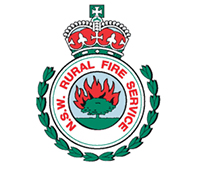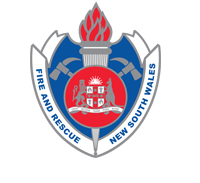Fire Flood & Storm Safety
The SES is responsible for planning for and responding to floods and storms in NSW. This includes helping communities prepare for these events. The SES is also responsible for planning for and responding to tsunami and cyclones, which are far less common occurrences in NSW.
FLOODS
If you live close to a creek, river, major stormwater drain or in a low‐lying area, you could be at risk from floods. Even if your property is not inundated by floodwater you could become isolated, access to other areas might be cut and you could lose access to power and/or water.
5 things you can do now to prepare for floods
If you live or work in a flood‐prone area there are some things you can do now to prepare:
1. Know your risk
- Check with your local SES unit or on the SES website to find out if there is a local FloodSafe guide
- Know the height at which your home, business and/or property could be affected by floodwater. Find out how deep the water could get in and around your property
- Contact your local Council if you want more information on how flooding could directly affect your property
2. Know where to go
- Find the safest route to travel in the event that you might need to evacuate and identify the height at which your evacuation route may be cut
- Find out where any evacuation centres could be set up in your area. If you prefer, check with friends and relatives outside the flood prone area to organise a place to go
3. Know who to call
- For emergency help in floods and storms, call the SES on 132 500
- Keep local emergency numbers handy (near your phone or on your fridge)
- In a life-threatening emergency, call 000 (triple zero)
4. Know your plan
- To help households and businesses plan for flooding, the SES has developed Home and Business FloodSafe Toolkits. They are available free of charge from your local SES unit or at www.ses.nsw.gov.au
- Review your plan annually to keep it up-to-date
5. Get your kit together
- Put together an emergency kit for your home or business
- If you are likely to be isolated by floodwater, have sufficient non‐perishable food, essential medications, fuel and other necessities to last at least a week. Remember to include pet food and/or stock feed if required
When a flood watch is issued
A Flood Watch is issued by the Bureau of Meteorology if flood producing rain is expected to happen in the near future. The general weather forecasts can also refer to flood producing rain. You should be prepared to act should flooding occur.
- Listen to your local radio station for information, updates and advice.
- Locate and check your Emergency Kit
- Check on your neighbours and make sure they are aware of the Flood Watch
- Never drive, ride or walk through floodwater
- Locate and get ready to activate your Home or Business FloodSafe Plan
- Locate pets. Prepare to take them with you or move them to higher ground
If isolation is likely, have sufficient non-perishable food, essential medications, fuel and
other necessities to last at least a week.
Remember to include pet food and/or stockfeed if required
When a Flood Warning is issued
A Flood Warning is issued by the Bureau of Meteorology when flooding is about to happen or is happening. Flood Warnings provide a predicted flood level and time at which a river will reach that level.
Flood Warnings are issued in relation to flood gauges which are situated at a certain point on a river.
- Never drive, ride or walk through floodwater
- Stack possessions, records, stock or equipment on benches and tables, placing electrical items on top
- Secure objects that are likely to float and cause damage
- Relocate waste containers, chemicals and poisons well above floor level
- Activate your Home or Business FloodSafe Plan
- Keep listening to your local radio station for information, updates and advice
- Keep in contact with your neighbours
- Be prepared to evacuate if advised by emergency services
- Act early as roads may become congested or close
When an Evacuation Warning is issued
When flooding is likely to cut evacuation routes or inundate property, the SES may issue an Evacuation Warning to indicate that you should get prepared to evacuate. This means that flooding is imminent in your area. Being prepared will allow you to respond quickly.
- Locate important papers, valuables and mementos. Put them in your Emergency Kit
- Keep listening to your local radio station for information, updates and advice
- Follow instructions given to you by emergency services
When an Evacuation Order is issued
When you are required to evacuate, the SES will issue an Evacuation Order advising people of what to do and where to go. There are a number of ways you might hear about the need to evacuate including, but not limited to, doorknock (by SES or other emergency services), through radio stations, or by automated telephone and/or SMS. You must evacuate immediately.
You should try to seek shelter with family or friends well away from flood impacted areas. In larger floods, evacuation centres may be established to help people affected by the flooding.
If you are isolated by floodwater, the SES may coordinate the supply of essential items to communities and properties.








